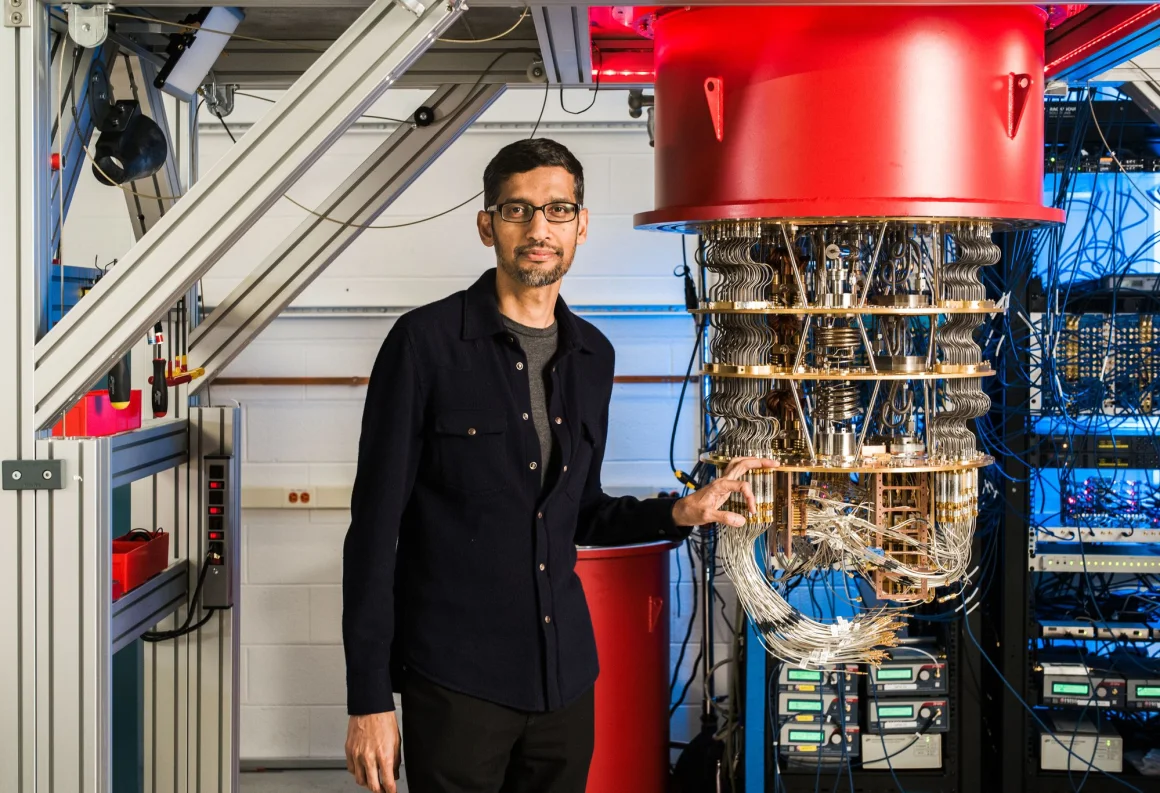On October 22, 2025, Google’s quantum computing team made an announcement that sent shockwaves through the tech world. They claimed their “Willow” quantum processor performed a specific, complex calculation in just over 2 hours. The same task, they estimate, would take the world’s most powerful classical supercomputer 3.2 years to complete.
That’s a 13,000-fold speedup.
But while the number is staggering, it’s not the most important part of the story. The real breakthrough is that, unlike past claims, this one is verifiable.
Here’s a clear, accessible breakdown of the tech, the claim, and what it all means.
The Big Claim: It’s Not Just Fast, It’s Provable
To understand why this is such a big deal, we have to look back to 2019. Google made its first “quantum supremacy” claim then, stating its machine had performed a task no classical computer could.
The problem? The task was, essentially, to generate a set of truly random numbers. It was a bit like a magic trick. The machine produced an answer, but it was almost impossible to check if it was the right answer. It was a flex of computing muscle, but not a useful one.
This new “Quantum Echoes” experiment is different. It’s not a magic trick; it’s a science experiment.
- The Old Way (2019): Produced a spray of random numbers that were unverifiable.
- The New Way (2025): Solves a problem that produces a single, correct, checkable answer.
Researchers can run the test on a smaller scale (say, with 30 quantum bits instead of 65) and check the quantum computer’s answer against a normal computer. When the answers match, it builds trust that the machine is also getting the right answer when it scales up to problems that classical computers can’t solve.
This is the real milestone: a move from a “trust us, it’s fast” benchmark to a “here is the answer, go check our work” scientific tool.
The Tech: How “Quantum Echoes” Work
So, what is this incredibly hard problem that Google’s machine solved?
In simple terms, the “Quantum Echoes” algorithm is a test of the “quantum butterfly effect.” It measures how a tiny, tiny disturbance in a complex quantum system spreads and scrambles information.
The process, simplified, works like this:
- Scramble: The quantum bits (qubits) are all linked together and allowed to interact, creating a state of maximum quantum chaos.
- Poke: The researchers “poke” a single qubit, introducing a tiny, precise disturbance.
- Reverse: This is the magic. The team reverses the entire process, running the quantum system’s clock backward in time.
- Listen for the “Echo”: After running time backward, they look at the original qubit. If the system were perfect, the “poke” would be perfectly “un-poked,” and the qubit would be back to its starting state.
But it’s not perfect. The disturbance leaves a tiny, measurable “echo.” Finding this faint signal is the goal.
Why is this so hard for a normal computer? A classical supercomputer trying to track this would have to calculate every single possible interaction and interference between all the qubits—an exponentially large number of possibilities. It gets lost in the noise.
The quantum computer doesn’t calculate this. It becomesthe experiment. It uses that very chaos and interference as a part of its computation, naturally finding the “echo” that a classical machine would spend years searching for. Pulling this off required Google’s Willow chip to have an incredible level of precision, with near-perfect control over thousands of operations.
The Catch: Is the 13,000x Speedup Real?
Yes, but with a big asterisk. It’s what experts call a “perishable benchmark.”
The 13,000x speedup is real today, against today’s best-known classical software. But by publishing this result, Google has just thrown down the gauntlet to the entire classical computing world. It’s highly likely that, in the coming months or years, a clever programmer will find a new classical algorithm or software shortcut that dramatically cuts down that 3.2-year estimate.
The claim is a snapshot in a moving race. But even if the gap narrows, it proves that the quantum hardware has reached a new level of power and stability.
What It All Means: Utility and Threat
This is the most important part. What does this mean for you?
1. What It Can Do: The Path to “Quantum Utility”
This isn’t just an abstract physics problem. Google immediately showed off a practical application: using this “Quantum Echoes” technique as a “molecular ruler.”
They used the quantum computer to measure the tiny, long-distance interactions between atoms in a small molecule. This is something that’s incredibly difficult to do with standard lab equipment.
This opens the door to a new era of “quantum utility”—using these machines to solve real-world problems. Imagine being able to perfectly simulate:
- New Drugs: How a complex drug molecule will actually bind to a protein.
- Better Batteries: How electrons really move inside a new battery material.
- New Materials: Designing new superconductors or more efficient solar panels.
This experiment is the first, concrete step on that path.
2. What It Can’t Do: The “Encryption” Question
Let’s be perfectly clear: This breakthrough does not, in any way, threaten your data, Bitcoin, or internet encryption.
Headlines suggesting this are confusing two totally different types of quantum computing.
- This Machine: Is a “simulator.” Think of it as a revolutionary wind tunnel for testing quantum physics.
- A “Code-Breaker”: Is a “calculator” that would need to run a totally different program (called Shor’s algorithm).
Building this “simulator” is a huge achievement, but it’s a completely different engineering path from building a “code-breaker.” A machine capable of breaking modern encryption is still believed to be decades away and would need to be millions of times larger and more stable than the Willow chip.
Your online data is safe.
The Bottom Line
Google’s “Quantum Echoes” achievement is a genuine milestone. It’s the moment the field pivoted from “can we build one?” to “what can we do with it?”
It proves that today’s generation of quantum computers are not just noisy, experimental lab toys. They are becoming powerful, verifiable scientific instruments. The revolution won’t happen overnight, but this is the first, clear signal that it’s truly on its way.
Disclaimer: Important Legal and Regulatory Information
This report is for informational purposes only and should not be construed as financial, investment, legal, tax, or professional advice. The views expressed are purely analytical in nature and do not constitute financial guidance, investment recommendations, or a solicitation to buy, sell, or hold any financial instrument, including but not limited to commodities, securities, derivatives, or cryptocurrencies. No part of this publication should be relied upon for financial or investment decisions, and readers should consult a qualified financial advisor or regulated professional before making any decisions. Bretalon LTD is not authorized or regulated by the UK Financial Conduct Authority (FCA) or any other regulatory body and does not conduct activities requiring authorization under the Financial Services and Markets Act 2000 (FSMA), the FCA Handbook, or any equivalent legislation. We do not provide financial intermediation, investment services or portfolio management services. Any references to market conditions, asset performance, or financial trends are purely informational and nothing in this report should be interpreted as an offer, inducement, invitation, or recommendation to engage in any investment activity or transaction. Bretalon LTD and its affiliates accept no liability for any direct, indirect, incidental, consequential, or punitive damages arising from the use of, reliance on, or inability to use this report. No fiduciary duty, client-advisor relationship, or obligation is formed by accessing this publication, and the information herein is subject to change at any time without notice. External links and references included are for informational purposes only, and Bretalon LTD is not responsible for the content, accuracy, or availability of third-party sources. This report is the intellectual property of Bretalon LTD, and unauthorized reproduction, distribution, modification, resale, or commercial use is strictly prohibited. Limited personal, non-commercial use is permitted, but any unauthorized modifications or attributions are expressly forbidden. By accessing this report, you acknowledge and agree to these terms-if you do not accept them, you should disregard this publication in its entirety.



